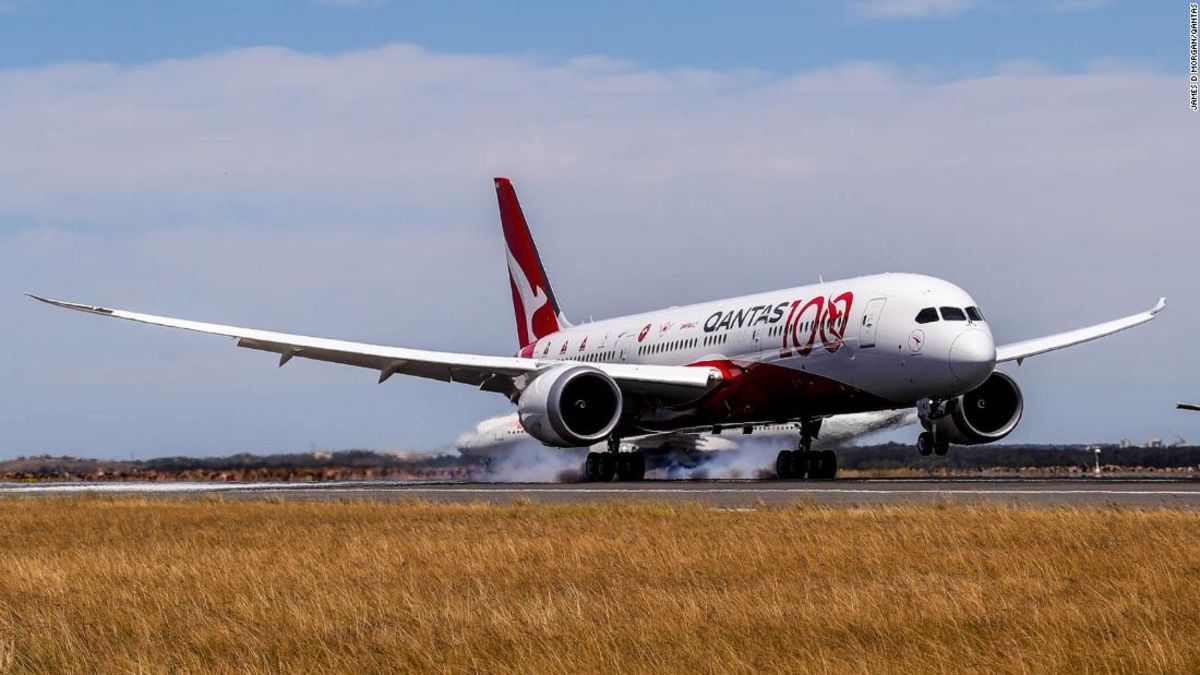Products You May Like
Sydney (CNN) — It feels like the world just got that bit smaller. A flight operated by Australian airline Qantas has just made the record-breaking trip from London to Sydney nonstop, spending 19 hours and 19 minutes in the air and opening up the possibility of scheduled direct flights between some of the farthest corners of the planet.
CNN was among the handful of journalists on board this research flight, during which scientists gathered data about passenger and crew wellbeing and biometrics. Qantas hopes data gathered from its “Project Sunrise” experiments will convince Australian aviation regulators to allow it to operate so-called ultra long haul flights of 22-plus hours on this and other routes.
Here are some of the things we learned:
The future is probably ultra long haul
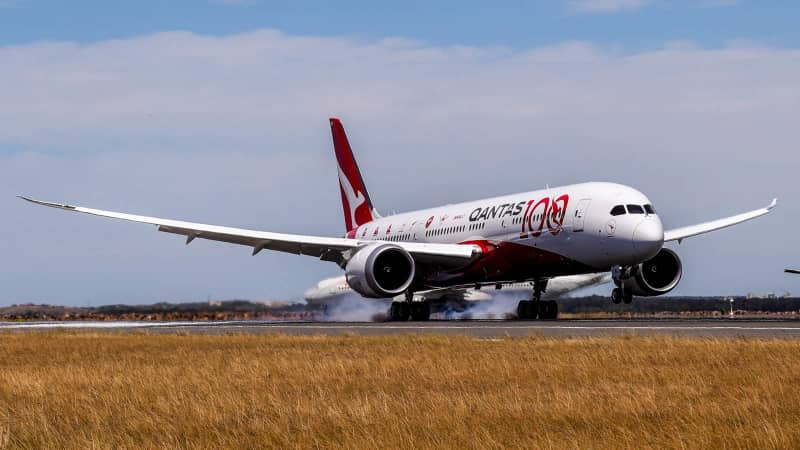
Qantas Flight QF7879 lands at Sydney Airport after 19 hours and 19 minutes in the air.
James D Morgan/Qantas
Singapore to New York, Doha to Auckland, Perth to London. The three longest flights in the world all clock in at more than 17 hours — and CNN’s Richard Quest has been on all of them.
Each time one of these ultra-long-haul flights was launched the question is asked over whether they’re worth it? Ultra-long-haul flights became economically viable with the arrival of new lighter, more fuel-efficient aircraft like the A350 and 787 Dreamliner.
Before they came on the scene, planes like the A340-500 and 777LR could do the distance, but were heavy and thirsty by comparison.
The 787 gives a 20% fuel per seat saving over the former 747s being phased out. This gives airlines much more margin to make money on long flights, where fuel is a higher percentage of cost. Those profit margins will act as a powerful incentive for carriers to focus on longer flights as a growth area.
The number of these new flights shows how popular they are. Airlines all over the world are now routinely offering flights of 15 hours duration, and that will continue.
And you’re going to have to pay more for it
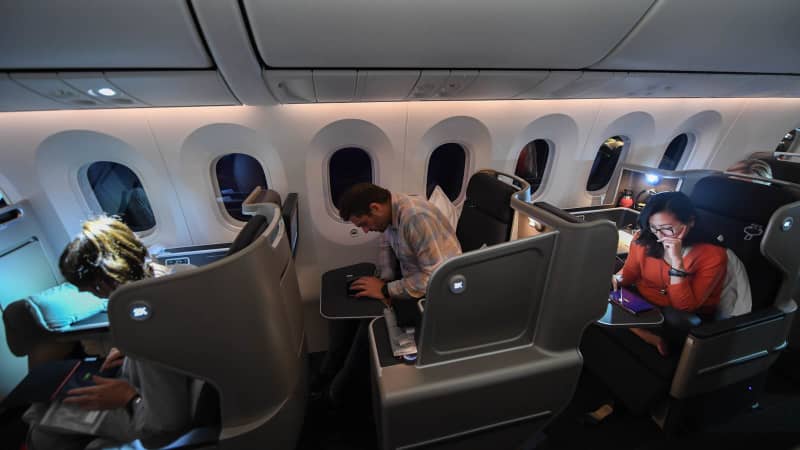
Business class aboard the record-breaking Qantas flight.
James D Morgan/Qantas
Should London to Sydney or London to New York routes get the go-ahead by 2022 or 2023 in line with Qantas’s timeline, don’t expect to pick up any discounted tickets.
If the apparent success of the airline’s direct service connecting the west Australia city of Perth to London nonstop is anything to go by, tickets will retail at premium rates.
Qantas says the London-Perth route typically sells at 20-30% higher rates than its other air fares. And even at this price point, the airline says it’s currently the most popular route it operates, with 95% occupancy — much higher than the typical 75% take up. It’s not just business travelers. The airline says the route is popular with families willing to pay the extra to avoid the strife of negotiating strung-out and exhausted children through a layover.
But there’s probably still room for stopovers
Airlines might offer ultra long haul flights, but not all passengers will want them. Some will prefer a stop to stretch legs and get some fresher air.
The reality is there’s room for both.
Sometimes we want to get there as fast as possible and will put up with air in a tin can for 16 hours for the sake of speed. Other times, the idea of getting off in Bangkok or the Gulf can be extremely attractive, especially as many of the airports there have transit hotels, gyms and swimming pools.
So far only Qatar is running one of the very longest routes with an economy section. Singapore Airlines’ is business and premium economy.
If Qantas’s “Project Sunrise” sunrise flights do include economy, many would probably choose a Singapore stopover than 19 hours nonstop in the cheaper seats.
Friendly skies are important
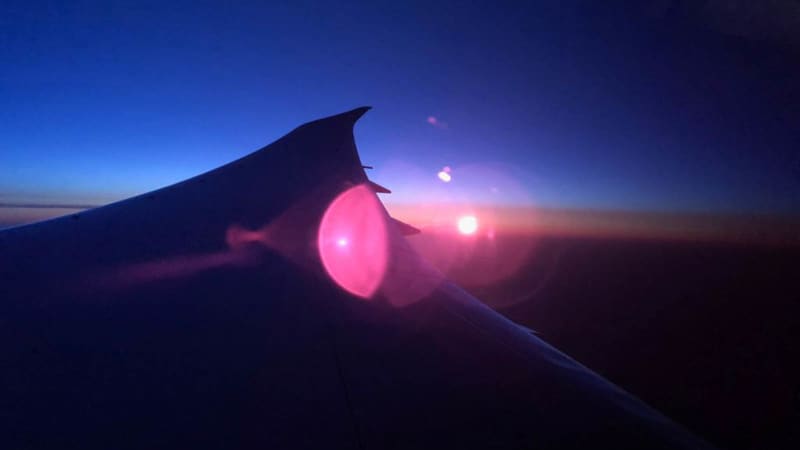
Sunset over Kazakhstan.
Barry Neild/CNN
The sky above us isn’t an international free-for-all where airplanes can roam at will. Each country jealously guards its airspace, requiring all aircraft to have permission to operate within it.
When it comes to planning an ultra-long-haul route where every mile added to the journey stretches the operational limits of airplanes, being able to plot the most direct route, or one with the most favorable tailwinds, is crucial.
In the case of flight QF7879, Qantas had to seek special permission to fly a course that its planes don’t normally take — across western Europe, then Poland, Belarus, Kazakhstan and China, before entering more familiar territory over the Philippines and Indonesia.
According to airline officials, getting the clearance it needed came right down the the wire. One of the countries only granted final permission 36 hours before departure.
When Qantas last flew a London-to-Sydney route — a one-off trip in July 1989 that involved a modified Boeing 747-400 carrying just 23 people, the world was a different place. The Soviet Union was still in place and China was far less open than it is now. That necessitated a different course overflying the former Yugoslavia, Turkey, Oman, and Sri Lanka.
Balance is important too
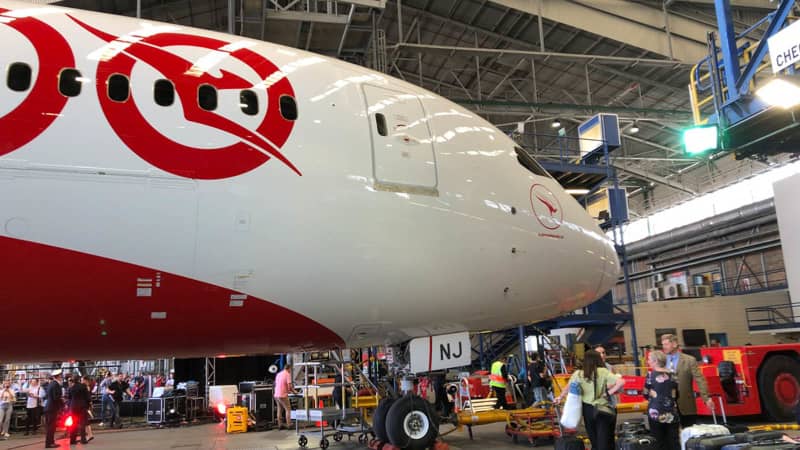
Flight QF7879 flew nose-heavy due to an empty economy class.
Barry Neild/CNN
Look at a modern jetliner up close and you’d be forgiven for thinking — after first marveling at how extraordinary it is that such a huge machine can fly in the first place — that the position of a handful of humans, or even a few cans of soda won’t make much difference when it comes to balancing it in the air.
You’d be wrong though.
Flight QF747-9 used a brand new Boeing Dreamliner which, despite being one of the most efficient in its class, still needed to reduce onboard weight to be able to stretch its operational limits. That meant the entire economy class section of more than 150 seats at the rear of the cabin were left empty resulting in a front-heavy plane as the few passengers on board were concentrated in the premium seating.
The knock-on effect was that all hand luggage needed to be stowed in the overhead bins at the rear and passengers were requested to spend as much time at the back — when exercising and so forth — as possible.
With the weight at the front, there’s more drag, reducing fuel economy.
In order to further trim the plane’s aerodynamic profile, all of its galley carts were stored at the back during the London-Sydney flight. There were also no liquor trolleys or the usual cans of soda. The only alcoholic beverage on board was wine and there were no traditional canned drinks.
There was a surprisingly plentiful supply of coconut water though.
Air travel is getting incredibly efficient
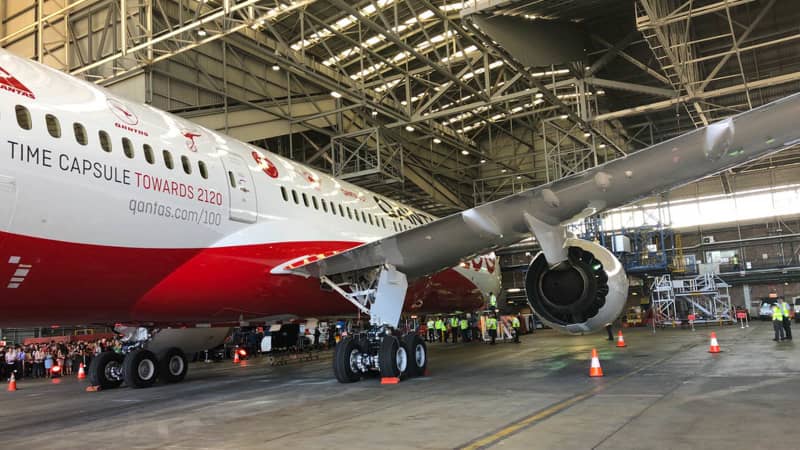
These engines could’ve stayed in the air another hour and 45 minutes.
Barry Neild/CNN
The fact that Qantas is even considering offering commercial routes from London and New York to Sydney, and can carry 50 passengers in comfort, is testament to the engineering efficiency of modern aircraft.
A look back at the Qantas London-Sydney flight of 1989, and the state-of-the-art Boeing 747-900 that made the journey, shows just how far the industry has come.
Twenty years ago, the aircraft had to be stripped of all but a few basic seats to minimize weight. Its fuel tanks were filled to spilling point with a special aviation fuel imported from Eastern Europe.
To conserve every last drop, it was towed to the runway before departure. Compare that with QF7879, which didn’t need full fuel tank (it carried about half that of the 1989 flight) and could keep its cabin furniture entirely in place.
The latest flight was trialing new Boeing wind forecasting equipment that uses almost-live data to make minor route adjustments and cut fuel consumption even further.
The result was that it landed in Sydney with 6,300 kilograms of fuel still on board. That’s enough for another hour and 45 minutes of flying — 15 minutes more than it was expected to arrive with.
It’s impossible to ignore environmental concerns

Rows of empty seats in economy.
Richard Quest/CNN
Looking at a row after row of empty economy class seating on board QF7879, thoughts inevitably turned to the recent “flight shaming” phenomenon that advocates avoiding any air travel.
If that wasn’t enough, the effects of the climate crisis affecting the planet were being felt both in the country of departure and destination.
In the UK, the same heavy rains that were deluging Heathrow as the flight took off were exacerbating severe floods in the north of the country that experts say the county will face more of as climate change advances.
As the plane made its approach to Sydney at the end of the flight, the smoke from bush fires near the city — again linked to climate change — could be seen billowing on the horizon.
Of course, flights like QF7879 pump more pollutants into the atmosphere and, even though Qantas offset the carbon emissions from the flight through what it claims is an industry-leading environmental program, there’s no escaping the fact that aviation is currently part of the problem rather than the solution.
That said, air travel isn’t going to vanish. It’s a key economic driver around the world, and the aviation industry is doing much more than many other sectors to reduce the harm it causes.
Whether that’s motivated by public image interests, genuine environmental concern or the augmented profit margins delivered by burning less aviation fuel is open to question.
We’re still a ways off a cure for jet lag
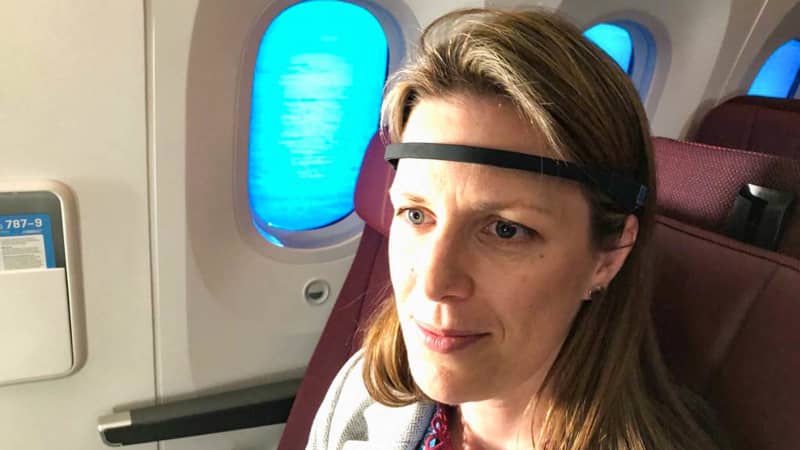
Researcher Tracey Sletten demonstrates a brainwave monitoring headset.
Barry Neild/CNN
The jet age has been with us for more than half a century, but we’re still no nearer finding a cure for one of the biggest banes of international travel.
Purported jet lag remedies come in all shapes and sizes, from special headbands that bathe the wearer’s eyes in blue lights, to pharmaceutical solutions that sometimes come with unpleasant side effects.
If there was one proven, tried and trusted method of quickly resetting body clocks, we’d all be using it.
The fact that jet lag science still had uncharted ground to cover was reflected by the presence of serious research scientists on board QF7879 from academic institutions including Melbourne’s Monash University.
While Qantas’s “Project Sunrise” flights have been dismissed by some as publicity-seeking gimmick, you don’t — as the airline’s chief exec, Alan Joyce, points out — subject senior pilots to weeks of urine testing, unless there’s a good reason.
While Qantas hopes data from the tests will help make its case to regulators to approve its ultra long haul flights, the researchers say their findings could contribute to new ways of minimizing jet lag’s pernicious affects on globetrotters.
One takeaway from the London-Sydney flight courtesy of Monash researcher Tracey Sletten: “It is all about the light. The timing of day that you get light exposure and the intensity of that light is going to help you with your jet lag more than anything else.”
But easing the health impact flying is possible
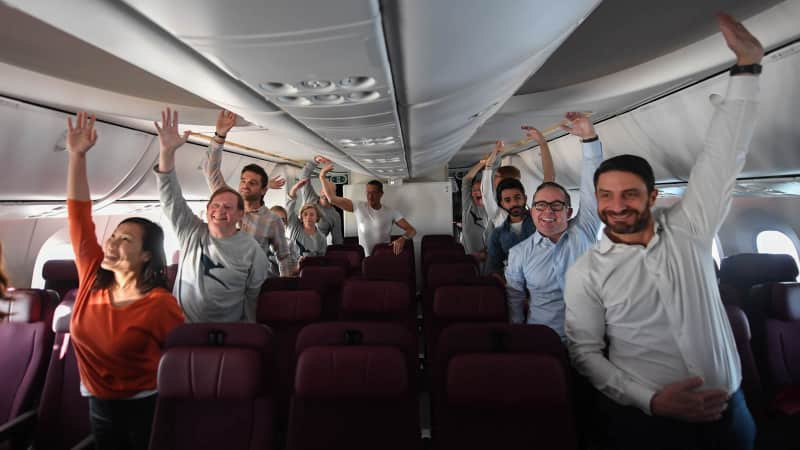
On board exercises can help minimize jet lag.
James D Morgan/Qantas
Watching the exercise routines that passengers on board QF7879 were encouraged to participate in was one of the inflight entertainment highlights of the 19-hour journey. The comical bobbing up and down the aisles, lunging and stretching was far more compelling than the latest Tarantino movie offered on the seat back screens.
But it does help, says Professor Corinne Caillaud of from the University of Sydney’s Charles Perkins Centre medical institute, who led the mid-air callisthenics. She says the exercises activate blood circulation, stretch muscles and reduce bodily stiffness. Varying the intestines of the workouts over the course of 19 hours also alleviates jet lag.
Food can also help.
The meals on board the London-Sydney flight were designed to encourage passengers to sleep at the beginning the journey and wake them up later, to reflect time of day at the destination. For instance, the carb-heavy supper served shortly after take off was to help passengers’ bodies produce an amino acid called tryptophan, which in turn encourages the production of serotonin and melatonin, hormones that regulate sleep patterns.
Necessity is the mother of airline innovation
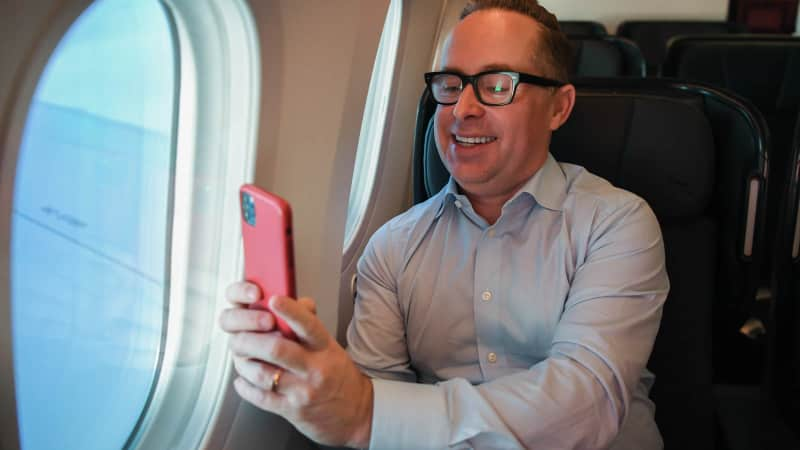
Qantas CEO Alan Joyce.
James D Morgan/Qantas
Qantas CEO Joyce takes professional pride in acknowledging that his airline is at the forefront of pushing innovation in ultra long hail flights — not least with his “Project Sunrise” challenge to Airbus and Boeing to provide the airplanes needed to make the journey commercially viable.
But why is the airline leading the way? “Simple,” says Joyce. “Australia is very far away from everywhere. We have so many ultra long hail flights. When you think of the distances we travel — already Perth to London is a 17-hour flight, Sydney to Dallas is 16, Santiago is over 14 hours, then we have services direct to London from Sydney that could be 21 hours… Paris, Frankfurt, Cape Town, Rio de Janeiro… We could justify a significant fleet that makes that economical.”
There are upsides to 19 hours on an airplane

Two sunrises in one flight.
Barry Neild/CNN
Spending that long inside a metal tube at 40,000 feet isn’t many people’s idea of a good time, but there are some upsides.
Obviously, for those on board QF7879, there’s bragging rights to being on a record-breaking service. There was also the rare spectacle of witnessing to separate sunrises in a single journey — something that even if the flight goes into regular service probably won’t be repeated by Qantas as the allotted flight schedules are unlikely to make it possible beyond special events.
There was also the advantage of being able to sprawl out on a nearly empty, brand new airplane.
Anyone buying an economy seat on a London-Sydney service in the future may not feel the same way.
Being crammed in cheaper seats — albeit ones with a better than average leg room allowance — will be a test of endurance.
That said, spending 20 hours cut off from Internet access was a rare chance to spend some enforced digital downtime. Perhaps Qantas will conveniently price any future Wi-Fi access beyond the budget of corporate expense accounts if the flight becomes a permanent fixture.
Defining ‘world’s longest flight’ is tricky
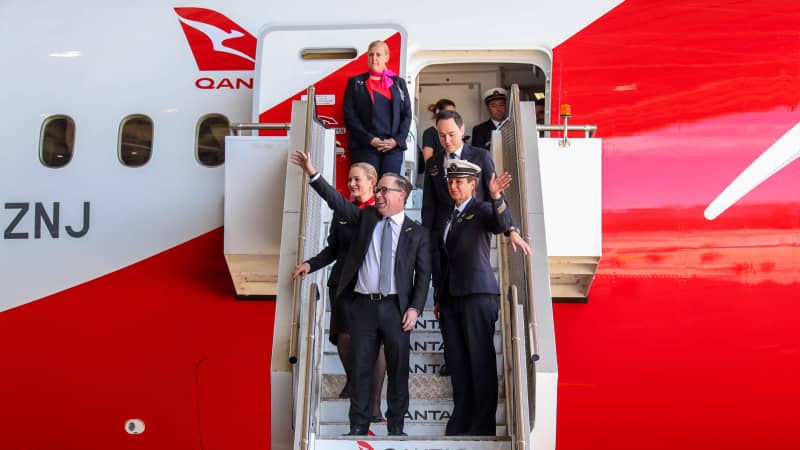
It’s a record!
James D Morgan/Qantas
We’ve called QF7879 a record-breaking flight both in terms of duration and distance. Not everyone agrees — and admittedly, the distinctions are subtle. In this case, the flight represents the longest distance covered by a normal commercial airline passenger plane (17,800 kilometers ) — and the longest time (19 hours and 19 minutes.)
Of course, you could argue it doesn’t count because this was not a revenue flight — no tickets were available. That would leave the record-holder as Singapore Airline’s SQ32 service from Singapore to New York.
Other long distance/duration claimants include a 22-hour flight in 2005 by a PIA Boeing 777 from Hong Kong to London, which covered 21,601 kilometers. But that can arguably be discounted because it deliberately went the wrong way around the world, a route that would never be operated on a commercial basis.
What these monster flights all have in common is the requirement of great stamina from the crew and endurance from passengers. And because they can ultimately be profitable, we are going to see more of them.
